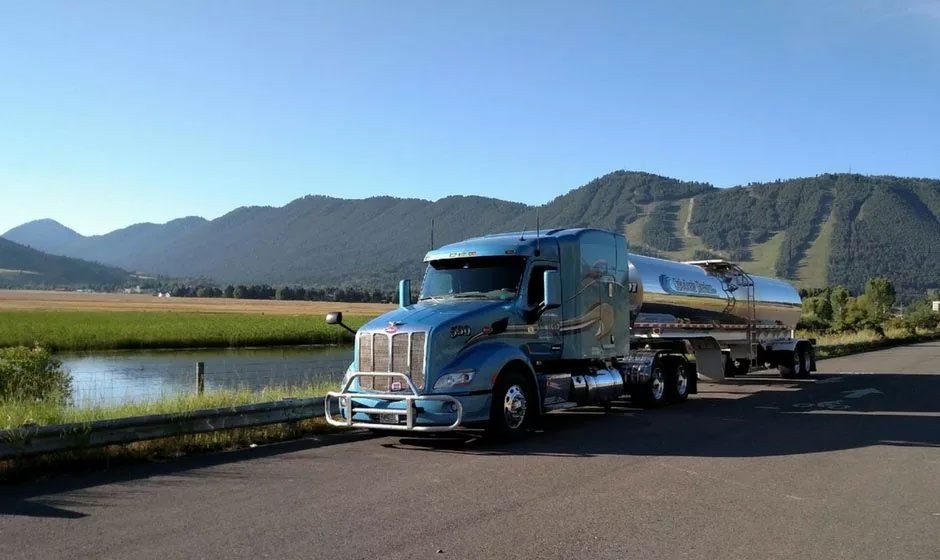Long-haul trucking is a demanding job that requires skill, patience, and an unwavering commitment to safety. With drivers spending extended periods on the road, often under challenging conditions, ensuring their safety and the safety of others is paramount. Here are some top safety tips for long-haul truck drivers to keep in mind:
Prioritize Rest and Sleep
One of the leading causes of semi-truck accidents is fatigue. The Federal Motor Carrier Safety Administration (FMCSA) has strict Hours of Service (HOS) regulations to prevent driver fatigue. Adhere to these regulations and ensure you get sufficient rest. Aim for 7-8 hours of quality sleep before hitting the road. Use rest breaks to refresh and avoid driving during your body’s natural low periods, typically between midnight and 6 a.m.
Perform Pre-Trip Inspections
Before starting any journey, conduct a thorough pre-trip inspection of your truck. Check critical components such as brakes, tires, lights, signals, and mirrors. Ensure your load is properly secured and balanced. Regular maintenance checks can prevent breakdowns and accidents caused by mechanical failures.
Maintain a Safe Following Distance
Heavy trucks require more time and distance to stop compared to smaller vehicles. Maintain a safe following distance to allow ample time to react to sudden stops or changes in traffic conditions. A good rule of thumb is to keep at least one second for every 10 feet of vehicle length, plus an additional second for speeds over 40 mph.
Stay Focused and Minimize Distractions
Distracted driving is dangerous. Avoid using your phone or other electronic devices while driving. If you need to make a call or check a message, use hands-free devices or pull over safely. Stay focused on the road, and be aware of your surroundings at all times.
Adhere to Speed Limits and Drive Defensively
Speed limits are set for a reason, particularly for large trucks that take longer to stop and are more difficult to maneuver. Always drive within the speed limit and adjust your speed according to road and weather conditions. Practice defensive driving by anticipating potential hazards and being prepared to react.
Plan Your Route in Advance
Effective route planning can enhance safety by avoiding congested areas, road construction, and severe weather conditions. Use GPS systems designed for trucks and stay updated on traffic reports. Plan your stops for fuel, rest, and meals to avoid unnecessary detours.
Be Prepared for Adverse Weather
Weather conditions can change rapidly and pose significant risks. Check weather forecasts before and during your trip. Equip your truck with essentials such as tire chains, extra clothing, blankets, and emergency supplies. In adverse weather conditions like heavy rain, snow, or fog, reduce speed and increase following distances.
Practice Proper Load Management
An improperly secured or overloaded truck can lead to accidents. Ensure that your load is within legal weight limits and properly distributed. Use straps, chains, and tarps as necessary to secure your cargo. Regularly check your load during your journey to ensure it remains secure.
Maintain a Healthy Lifestyle
Staying healthy is crucial for maintaining alertness and overall well-being. Eat balanced meals, stay hydrated, and avoid excessive caffeine and sugary snacks that can lead to energy crashes. Incorporate physical activity into your routine, even if it’s just a short walk during breaks.
Stay Informed and Continuously Improve
The trucking industry and safety regulations are constantly evolving. Stay informed about new safety technologies, regulations, and best practices through continuous education and training. Participate in safety programs offered by your employer or industry associations.
Safety on the road is the responsibility of every truck driver. By prioritizing rest, performing regular inspections, staying focused, and practicing defensive driving, long-haul truck drivers can significantly reduce the risk of accidents. Remember, the goal is not just to deliver the cargo on time, but to ensure that you and everyone else on the road arrive safely. Safe driving!

